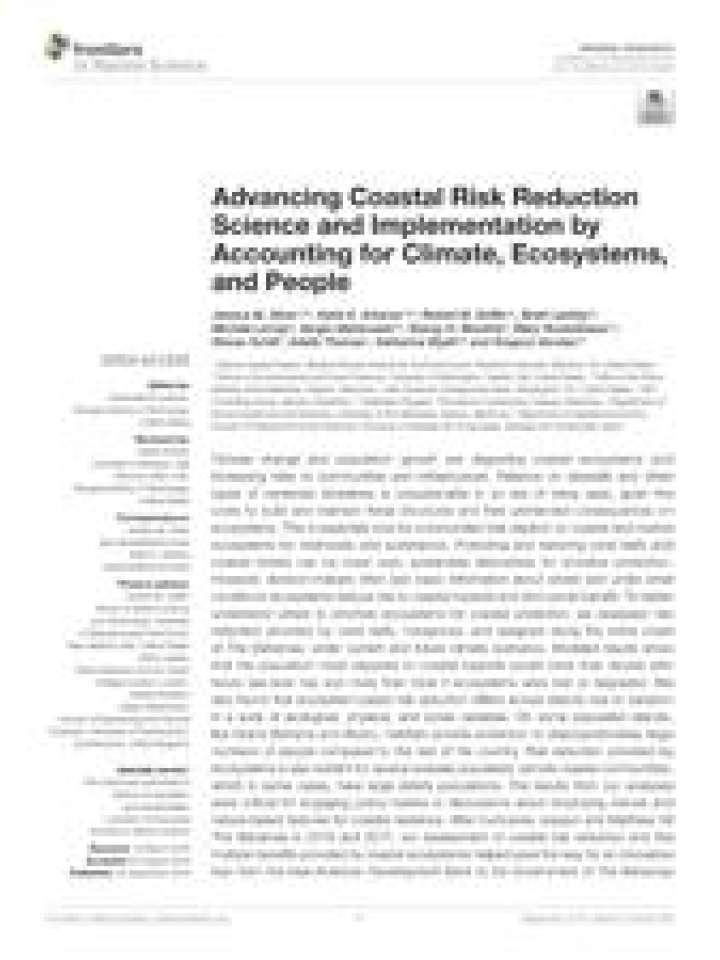Advancing coastal risk reduction science and implementation by accounting for climate, ecosystems, and people
Climate change and population growth are degrading coastal ecosystems and increasing risks to communities and infrastructure. Reliance on seawalls and other types of hardened shorelines is unsustainable in an era of rising seas, given the costs to build and maintain these structures and their unintended consequences on ecosystems. This is especially true for communities that depend on coastal and marine ecosystems for livelihoods and sustenance. Protecting and restoring coral reefs and coastal forests can be lower cost, sustainable alternatives for shoreline protection. However, decision-makers often lack basic information about where and under what conditions ecosystems reduce risk to coastal hazards and who would benefit. To better understand where to prioritize ecosystems for coastal protection, this document assesses the risk reduction provided by coral reefs, mangroves, and seagrass along the entire coast of The Bahamas, under current and future climate scenarios. Modeled results show that the population most exposed to coastal hazards would more than double with future sea-level rise and more than triple if ecosystems were lost or degraded. Another find was that the ecosystem-based risk reduction differs across islands due to variation in a suite of ecological, physical, and social variables. On some populated islands, like Grand Bahama and Abaco, habitats provide protection to disproportionately large numbers of people compared to the rest of the country. Risk reduction provided by ecosystems is also evident for several sparsely populated, remote coastal communities, which in some cases, have large elderly populations. The results from the analyses were critical for engaging policy-makers in discussions about employing natural and nature-based features for coastal resilience. After hurricanes Joaquin and Matthew hit The Bahamas in 2016 and 2017, the assessment of coastal risk reduction and the multiple benefits provided by coastal ecosystems helped pave the way for an innovative loan from the Inter-American Development Bank to the Government of The Bahamas to invest in mangrove restoration for coastal resilience. This work serves as an example for other regions and investors aiming to use assessments of ecosystem services to inform financing of natural and nature-based approaches for coastal resilience and climate adaptation.
Explore further
